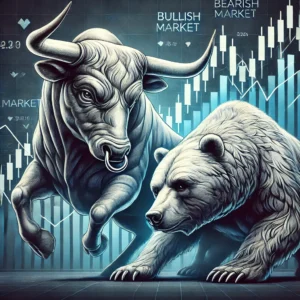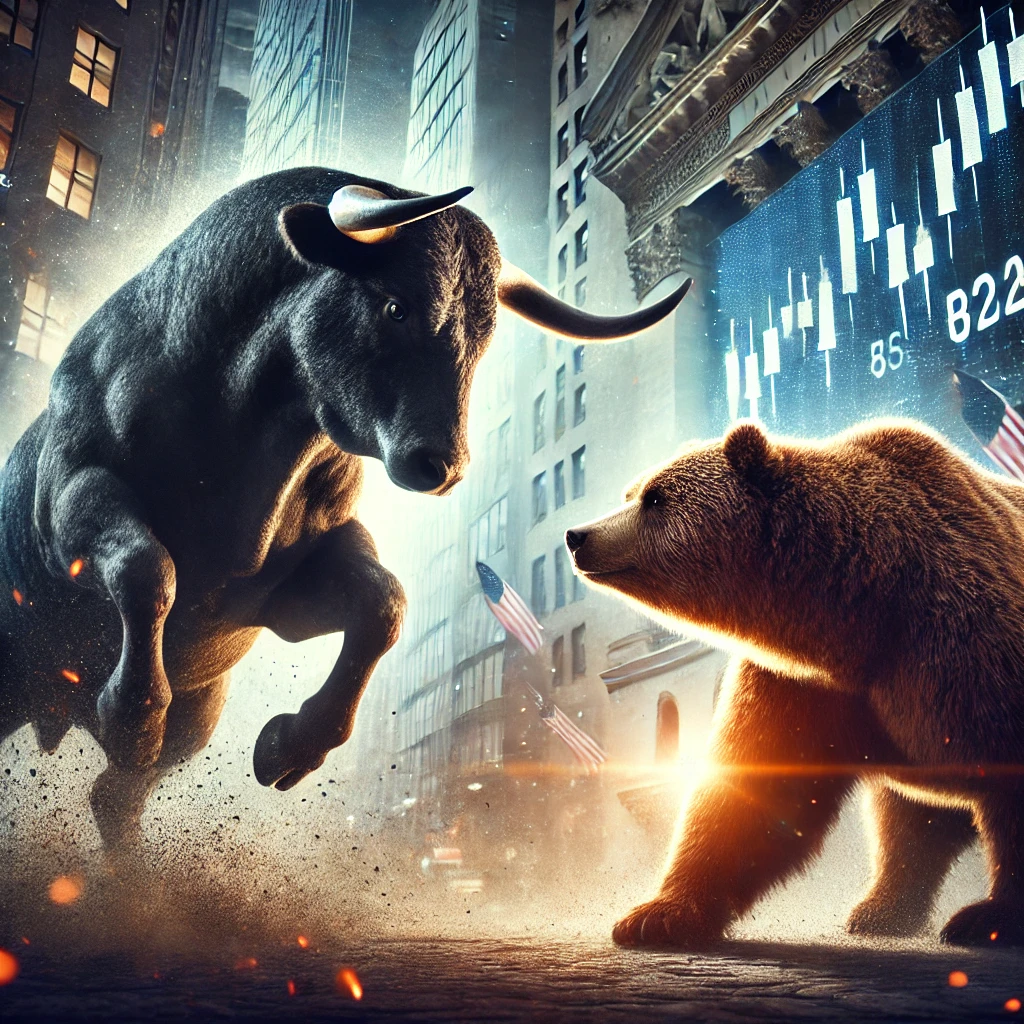Bull vs Bear in stock market
Bull and Bear symbolize the upwards and Downward trends of the stock market. The Bull represents the upward movement of the Stock Market and BEAR represents Downward trends. There are reasons why these two animals are chosen as symbols. The Bull always attacks in an upward direction. So, BULL represents upward trends in Stock Markets. Bear Attacks the hunt in a downward direction. That’s why BEAR represents the downward trend in the stock market. This block will focus on the concept of Bull vs Bear in stock market.
BULL market means the upward movement of the Stock market. In Bullish Market, Stock prices continuously move up. Bear market means downward movement of the Stock Market. In the Bear Market, stock prices move downward continuously.

In this phase, the stock market sentiments are in an upward mood. Investors are willing to invest in Stock markets. They take extra risks to invest in stocks. All are positive about the returns from stock markets. Share prices are moving in an upward direction. There is a positive sentiment about the market returns. Since the economy is growing more jobs are created in markets. Companies make the expansion plan. They raise the money by issuing IPOs. Even the IPOs of average-performing companies were oversubscribed by investors in the BULL phase. The BULL market indicates an overall progressive economy.
BEAR Phase: –
In this phase, the stock market sentiments are in a downward mood. Investors are not willing to invest in stock markets. They think about selling their Stocks. Investors fear losing their money in the market. Investor’s portfolio shows a decline in their values. Investors shift to safer choices of investment like Fixed Deposit or Gold. Share prices keep falling. Companies are not willing to expand their businesses. Companies think about reducing their expenses. Employees may get layoffs. There is less demand for new jobs in the market. Existing Employees struggle to get salaries and increments. The job market becomes tough. Companies offer lesser salaries and perks to new Employees. The economy starts showing signs of a slowdown.
Bull vs Bear in stock market..Video
Sideways Market Meaning: –
In the Sideways market phase, the Market doesn’t move with particular trends. Like in the BULL phase, it goes up. Whereas in the Bear phase, it moves down. But in the Sideways Market phase, there is no clear trend. The market fluctuates up and down in close range after some interval. You cannot predict the trend of the market. This type of phase is also called a “Horizontal Trend”. The Sideways Market phase may continue for some weeks. Between the BULL and BEAR phases, the market may consolidate for some time in the sideways market phase. The market is behaving in this way because demand and supply forces are equal in this phase. Investors should be careful while investing in the sideways Market phase because you cannot predict the market’s mood. Traders take short-term trade and make profits in this phase.
Conclusion:-
- Bull Phase:- In the Bull phase, the market is in a positive mood and consistently pushing and moving in an upward direction. It shows a good, positive, and healthy economy.
- Bear Phase:- In the Bear phase, the market goes in negative sentiments. The stock market is a downward trend. There are negative sentiments in the market. It shows the slowdown and degrowth of the economy
- Sideways Market Meaning: –In a sideways Market, there is no specific upward or downward movement of the market. The market moves up and down in close intervals.The reader will also like to read about the following topics
The reader will also like to read about the following topics
4. Bull vs Bear Phase in the Stock Market
5 . XIRR vs CAGR vs Absolute Return
6. Nifty 50 vs Nifty Next 50 vs Nifty 100
7. Top 5 gold ETF funds in India

